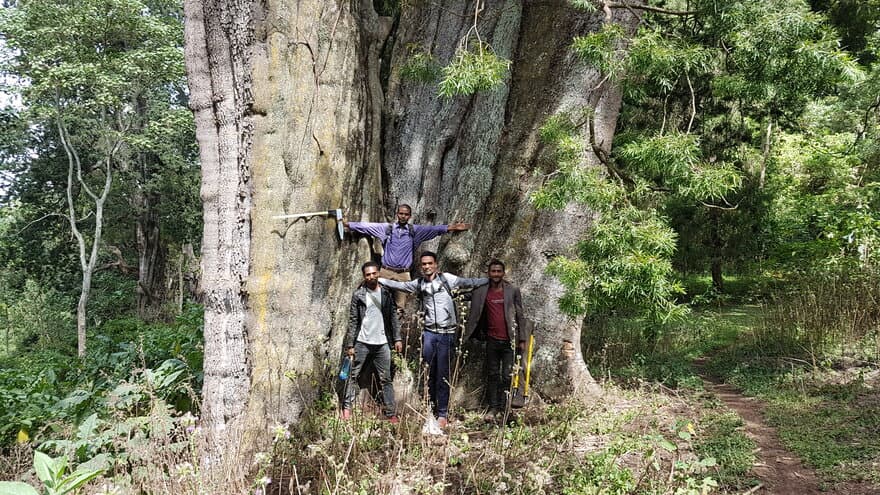In his PhD, Zerihun Asrat Kutie has assessed options for quantifying tree and forest resources of the dry Afromontane forests in south-central Ethiopia. His study has provided models and data and evaluated alternative methods and application of some remotely sensed data to improve estimations of forest parameters. The result is better forest management decision-making.
Forests play a significant role of climate change mitigation. By absorbing carbon dioxide from the atmosphere and storing the carbon as biomass, they are a key part of the fight against climate change. Forests also provide number of socioeconomic benefits ranging from local to the global scales, hence supporting directly or indirectly the livelihoods of millions.
“In Ethiopia such dependence on natural forests has been very intensive and resulted in severe deforestation and forest degradation problems,” PhD candidate Zerihun Asrat Kutie says.
Turning the tide on forest degradation
In response to the worsening conditions in Ethiopia, different forest conservation efforts including the REDD+ program have been made. Hence, to ensure effective and sustainable forest management and utilization practices, the presence of reliable and up to date information about the resource is indispensable, and depend on the availability of relevant models, data and methods.
“Sustainable forest management requires accurate knowledge about the state of the forest in question,” Kutie explains.
His thesis has been aimed at developing volume and biomass prediction models, providing wood basic density data and evaluating methods for estimating forest area, biomass and canopy cover for the dry Afromontane forests in south-central Ethiopia.
Increased flexibility
In his PhD, Kutie has developed volume and biomass models developed in a more flexible way for application. Parameters used included total tree and section (i.e. merchantable stem, branch and foliage). The developed models yielded more accurate result as compared to previously used options in the study site.
“Test results suggest that the models and data can also be applied in other similar forests in the country where site specific model and data are lacking,” he adds.
More feasible for developing countries
The use of remotely sensed data for forest resource assessment was also evaluated.
“For this I used optical satellite images,” Kutie says.
Forest area and canopy cover estimation based on visual interpretation of satellite images under different forest conditions were carried out.
“This approach is technically more feasible for developing countries like Ethiopia where capacities are limited in many ways,” he comments.
Increasing estimation efficiency
The project also included the use of remotely sensed data from different optical satellite images for large area forest biomass estimation from the dry Afromontane forest perspectives. Promising results were obtained and integrating such remotely sensed data improved precision of the estimate.
“The results showed a considerable gain in estimation efficiency as compared to solely field-based sample survey estimation.”
Easing program reporting
The results from Kutie’s thesis are steps forward and support decision-making towards sustainable utilization and management of the dry Afromontane forests in Ethiopia.
They will also assist the country to report its contribution to the global efforts of mitigating climate change through the implementation of REDD+ MRV programs.
“In these, and similar programs, regular periodic reporting of the greenhouse gas inventory results are required under the United Nations Framework Convention on Climate Change.”
The volume models are the first ever developed for the natural forests in Ethiopia. The biomass and volume models as well as the wood basic density data presented here may also be used to enrich the national and regional databases.
